An undersea cable to Penghu County has been severed, the Ministry of Digital Affairs said today, with a Chinese-funded ship suspected of being responsible.
It comes just a month after a Chinese ship was suspected of severing an undersea cable north of Keelung Harbor.
The National Communications and Cyber Security Center received a report at 3:03am today from Chunghwa Telecom that the No. 3 cable from Taiwan to Penghu was severed 14.7km off the coast of Tainan, the Ministry of Digital Affairs said.
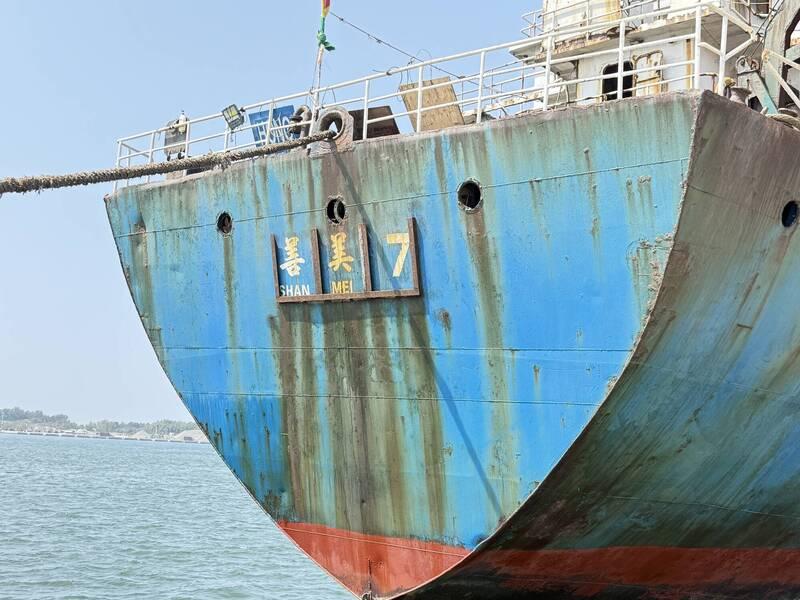
Photo copied by Chiu Chun-fu, Taipei Times
The Coast Guard Administration (CGA) upon receiving a report from Chunghwa Telecom began to monitor the Togolese-flagged Hong Tai (宏泰) freighter anchored near the cable, the CGA said in a news release.
The ship was in the area from Saturday at about 7:10pm to around the time when Chunghwa Telecom reported that the cable had been severed, it said.
When the CGA received another report at 3am that the cable had been severed and that external force could have been responsible, it said it stopped the vessel and called for reinforcements.
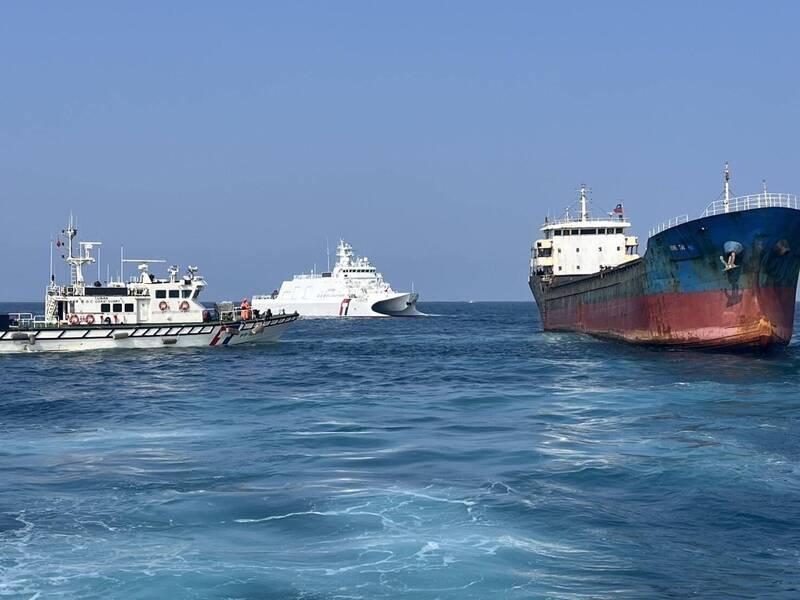
Photo courtesy of the Coast Guard Administration
Although coast guard personnel could not board and inspect the ship due to a difference in height, it was escorted back to port in Tainan, where prosecutors have started their investigation after detaining the crew, it said.
Despite flying Togo’s flag, Hong Tai is Chinese-owned and all eight crew members on board are Chinese, the CGA said.
Furthermore, the ship’s automatic identification system name does not match what it identified itself as over the radio or what is written on the hull, the CGA said.
After the cable was severed, the digital ministry ordered the company to redirect traffic to other cables connecting Taiwan’s main island to its offshore islands.
The company was also instructed to add the cable to its repair schedule, coordinating with a repair vessel currently in Kaohsiung working to fix the previously damaged Taiwan-Matsu No. 2 and No. 3 cables.
Those two cables are expected to be fully completed by the end of this month and next month, respectively, with the cable connecting Penghu to be fixed afterward, the ministry said.
The ministry has submitted a report to the Executive Yuan labeling Taiwan’s undersea cables as critical infrastructure.
It also said it would move to strengthen Taiwan’s resilience to such issues by establishing more monitoring stations and subsidizing telecom operators’ capacity to repair cables and invest in backup communication infrastructure such as microwave systems.
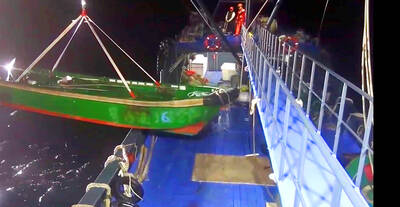
Taiwan yesterday condemned the recent increase in Chinese coast guard-escorted fishing vessels operating illegally in waters around the Pratas Islands (Dongsha Islands, 東沙群島) in the South China Sea. Unusually large groupings of Chinese fishing vessels began to appear around the islands on Feb. 15, when at least six motherships and 29 smaller boats were sighted, the Coast Guard Administration (CGA) said in a news release. While CGA vessels were dispatched to expel the Chinese boats, Chinese coast guard ships trespassed into Taiwan’s restricted waters and unsuccessfully attempted to interfere, the CGA said. Due to the provocation, the CGA initiated an operation to increase
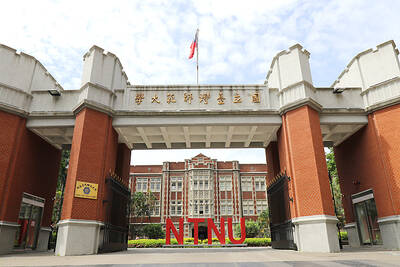
CHANGING LANDSCAPE: Many of the part-time programs for educators were no longer needed, as many teachers obtain a graduate degree before joining the workforce, experts said Taiwanese universities this year canceled 86 programs, Ministry of Education data showed, with educators attributing the closures to the nation’s low birthrate as well as shifting trends. Fifty-three of the shuttered programs were part-time postgraduate degree programs, about 62 percent of the total, the most in the past five years, the data showed. National Taiwan Normal University (NTNU) discontinued the most part-time master’s programs, at 16: chemistry, life science, earth science, physics, fine arts, music, special education, health promotion and health education, educational psychology and counseling, education, design, Chinese as a second language, library and information sciences, mechatronics engineering, history, physical education

The Chinese military has boosted its capability to fight at a high tempo using the element of surprise and new technology, the Ministry of National Defense said in the Quadrennial Defense Review (QDR) published on Monday last week. The ministry highlighted Chinese People’s Liberation Army (PLA) developments showing significant changes in Beijing’s strategy for war on Taiwan. The PLA has made significant headway in building capabilities for all-weather, multi-domain intelligence, surveillance, operational control and a joint air-sea blockade against Taiwan’s lines of communication, it said. The PLA has also improved its capabilities in direct amphibious assault operations aimed at seizing strategically important beaches,
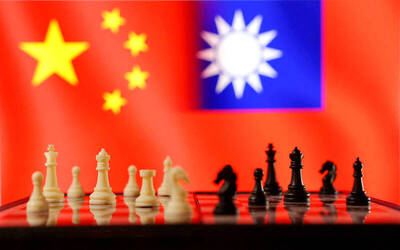
‘MALIGN PURPOSE’: Governments around the world conduct espionage operations, but China’s is different, as its ultimate goal is annexation, a think tank head said Taiwan is facing a growing existential threat from its own people spying for China, experts said, as the government seeks to toughen measures to stop Beijing’s infiltration efforts and deter Taiwanese turncoats. While Beijing and Taipei have been spying on each other for years, experts said that espionage posed a bigger threat to Taiwan due to the risk of a Chinese attack. Taiwan’s intelligence agency said China used “diverse channels and tactics” to infiltrate the nation’s military, government agencies and pro-China organizations. The main targets were retired and active members of the military, persuaded by money, blackmail or pro-China ideology to steal